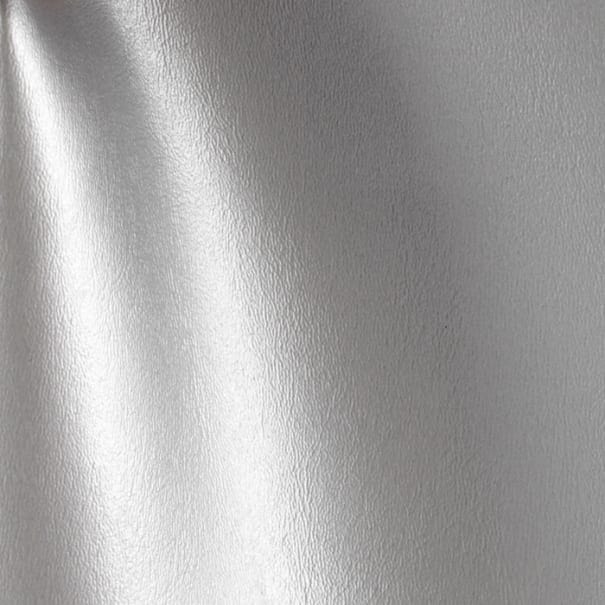Mosaic tile is a testament to the beauty of genuine craftsmanship. Originating in the times of the Byzantine empire, its style transcends both culture and millennia. The process of creating mosaic tiles is an art in itself that requires meticulous attention to detail. That goes for both authentic piece-by-piece installations and modern mesh-backed sheets of mosaic tiles.
In this article, we dive into the world of mosaic pool tiles, exploring how glass tiles can be used:

Types of Glass Mosaic for Pools
There are three different types of glass tile products used in pool deck tile, waterline tile, and even kitchen backsplash and bathroom or shower tiles today. Each one is characterized by the temperature at which its formation takes place.
Cast Glass Tile
Cast glass is produced under the temperature of 1600° F, while in liquid form. Molds, usually having beveled edges to facilitate the withdrawal of an end product, are filled with melted glass at a very high temperature. When cooled and hardened, cast glass often shows stained effects and boasts a multicolored design.
Fused Glass Tile
Fused glass is produced under the temperature of 1023-1599° F by fusing sheets of glass and glazes. The layers of glass sheet and colored glazes are stacked together and gradually heated in a kiln until they fuse and then cooled. This results in acquiring a uniform color throughout the glass and smoothing its edges.
Low-Temperature Sheet
Low-temperature sheet is produced by coating the back side of the glass with colors (with the help of either a heat or cold applied technique) and then heating it at temperatures under 1023° F. Mosaic chips are cut from float glass (like the one used in window glass production) and coated with color on one of its sides by a cold-applied or heat-applied method.
The former allows for achieving beautiful coloration, but cannot be used in pool installations, since it doesn’t provide sufficient moisture resistance. The second method implies firing to transfer a color applied on the glass bottom, usually supplemented with a white coating behind the color.
Assessing the Performance Specifications of Glass Tile
Glass tile lasts a long time when thoughtfully selected and well-maintained. In the context of pool tile installation specifically, you'll want to choose pool tiles that meet ANSI A137.2 requirements.
These establish standards for…
- Tensile Strength: The amount of force that needs to be applied to a point load in order to break a tile using a three-point mount, over 250 pounds for Crystal and over 350 pounds for Cast.
- Thermal Shock Resistance: The level of instantaneous temperature drop a material can withstand, over 100°F for exterior applications.
- Bond Strength: The cohesiveness of materials under exterior pressure, over 150 PSI for dry applications and 100 PSI for wet areas.
Installing Glass Mosaic Tile In a Pool
As beautiful as it is, mosaic tile isn't exactly easy to install. Mosaic pool tile installation in particular comes with its own unique challenges.
1. Inspection
Begin by checking for any defects or imperfections such as chips, cracks, or inconsistencies in color (the last criterion obviously doesn't apply in the case of iridescent tiles).
2. Preparation
Preparation involves cleaning the surface where the tiles will be installed to make sure it is completely dry and free of any impurities or residue. Also verify that all substrates are plumb and precise, while surface deviation doesn’t go beyond ¼” in 10’.
3. Thinset
Using a premium thin-set mortar is crucial when installing mosaic pool tiles. It should be rated for submersion in water and have a high bond strength, such as Laticrete 254 Platinum or Mapei Kerabond/Keralastic.
4. Leveling
Use a tile leveling system to keep the tiles level and flush with each other.
5. Grout
After the tiles have been set and the thin set has cured, it's time to grout. Use sanded grout for mosaic pool tile installations to ensure durability and resistance to water.
6. Expansion Joints
Expansion joints should be placed between tile and pool coping every 8-10 feet, as well as around all perimeters, fixtures, and changes in plane.
Post-Installation Cleaning and Maintenance
It's important to clean pool tiles thoroughly and regularly to maintain their beauty and durability. Regularly brush or vacuum the pool walls and floor to remove any debris that may accumulate. Cracked pool tiles should be replaced sooner rather than later - not only for aesthetic reasons but also to prevent water from seeping behind the tiles and causing damage.
Mosaic Pool Tile Installation Dos and Don'ts
Following the best practices below will help ensure a successful and long-lasting pool tile installation.
1. Do Choose the Right Colors
The great thing about mosaic pool tiles is that there are no rules. Why choose single color options like white tiles, blue tiles, green tiles, or aqua tiles when you can have all four and more? Mosaic is one unconventional pool tile style that never becomes passe. Just be sure to choose colors that complement each other and the rest of your pool design.
2. Don't Rush Installation
Installing mosaic glass tile sheets is much easier than individual tiles, but it still requires proper technique. If you aren't sure how to install mosaic tile sheets, try Googling 'how to install glass mosaic tile with mesh backing' for video walkthroughs. In case of doubt, it's always better to hire a professional for mosaic pool tile installation than to risk making mistakes. Especially when costs to tile or retile can increase by the square foot.
3. Do Use the Right Adhesive
Not all adhesives are created equal. Mosaic pool tile installation necessitates adhesive specifically designed for underwater applications.
4. Mounting Options
Back or mesh mounting adhesives are sometimes prone to re-emulsifying. Selecting high-grade materials and putting plenty of time into the installation process will help prevent the flaking of glass tiles in wet conditions. Special considerations may apply depending on whether you have a fiberglass vs. concrete vs. vinyl pool.
5. Don't Forget About Safety
While mosaic glass pool tiles are stunning in appearance, it's important to remember that they will be in a wet and potentially slippery environment. To ensure safety, choose tiles with a textured or non-slip surface. This not only adds an extra layer of protection for swimmers but also provides added grip for those walking around the pool area.
Explore Incredible Pool Tile Options With Oasis Tile
The possibilities of pool tiles are endless. Mosaic tiles are especially inspiring to the creative mind - there's no shortage of glass tile color options to consider when planning your backyard's next big renovation. And this year’s pool tile trends are simply too good not to try.
From shimmering blues and greens to bold reds and yellows, Oasis Tile has a wide selection of popular pool tiles to choose from. You aren't limited to glass, either. Browse green pool tile trend options for a different look, or take advantage of the many benefits of porcelain tile. Whatever the case, we’re your trusted pool tile guide, ready to help you create designs that are as gorgeous as they are practical.


























